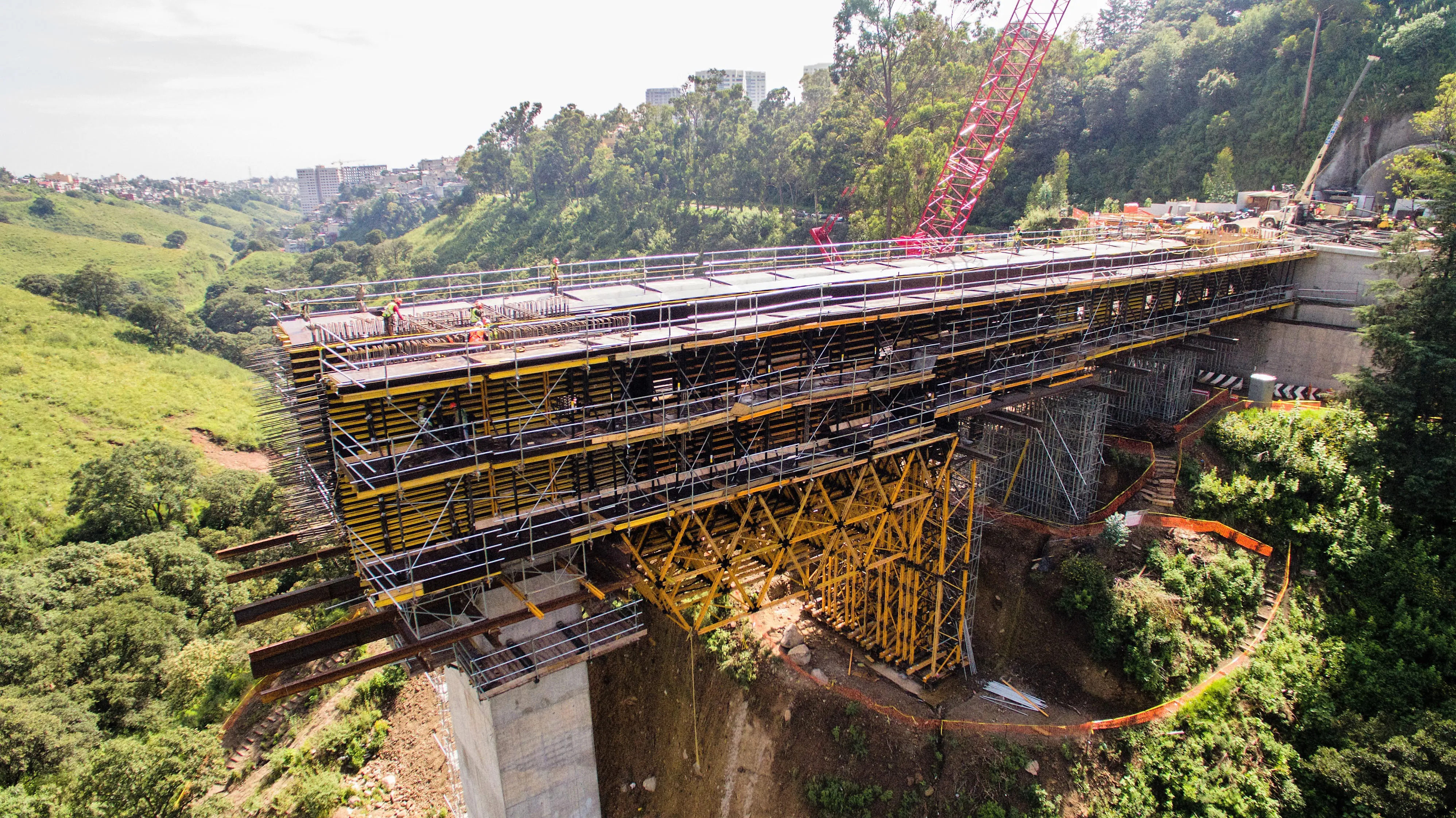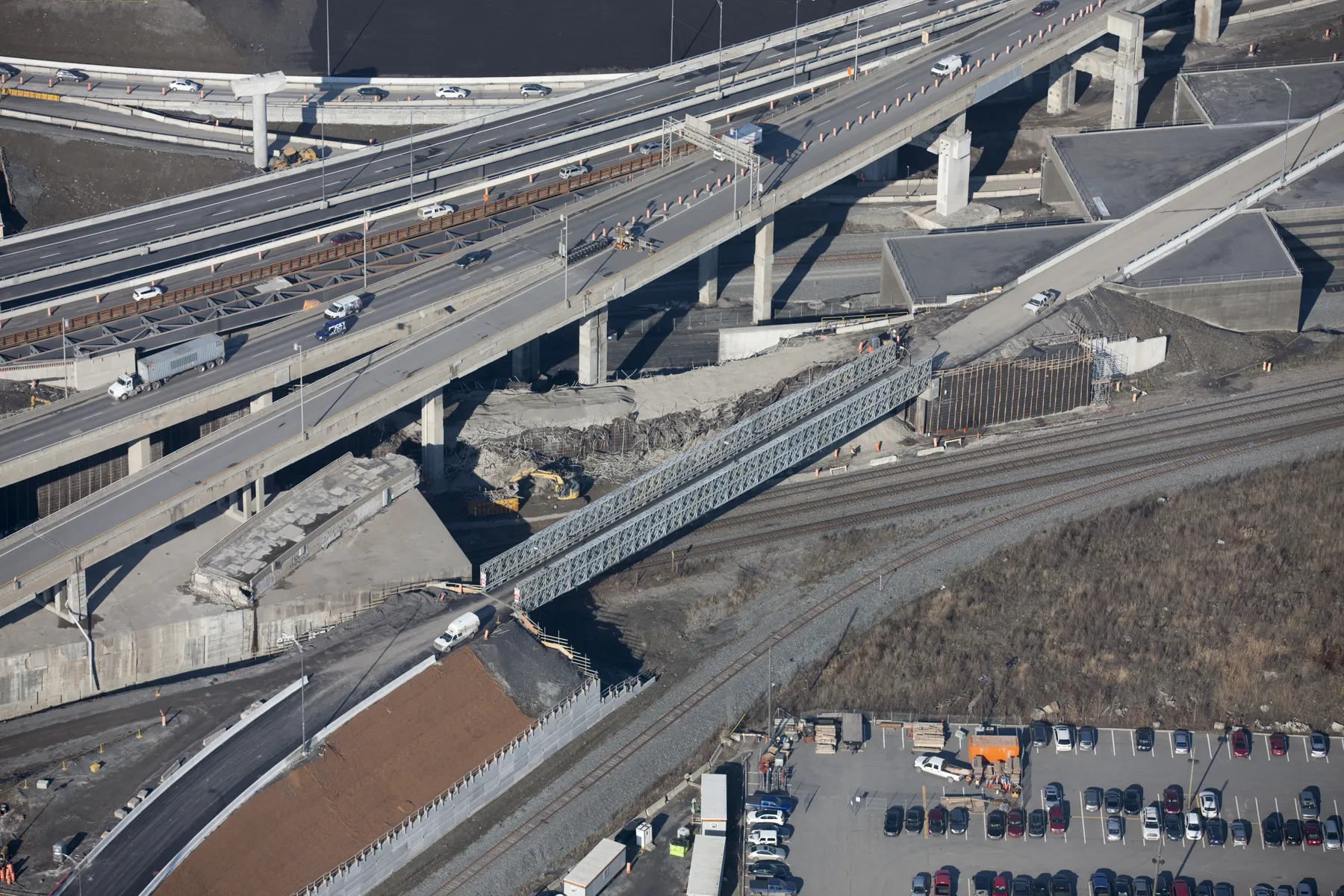When it was completed in 1965 – just six years after the Auckland Harbour Bridge – the six-lane Newmarket Viaduct with its tall, slender piers was something of an engineering wonder, the first of its kind in the Southern Hemisphere.
Forty years on it had become a much-maligned contributor to Auckland’s chronic traffic congestion, too weak seismically to withstand the heaviest loaded trucks let alone a severe earthquake, so narrow in the shoulders that any accident stopped traffic flow and made it difficult
June 15, 2012
Read time: 4 mins

When it was completed in 1965 – just six years after the Auckland Harbour Bridge – the six-lane Newmarket Viaduct with its tall, slender piers was something of an engineering wonder, the first of its kind in the Southern Hemisphere.
Forty years on it had become a much-maligned contributor to Auckland’s chronic traffic congestion, too weak seismically to withstand the heaviest loaded trucks let alone a severe earthquake, so narrow in the shoulders that any accident stopped traffic flow and made it difficult for rescue vehicles to reach the site, suspect to the high stresses caused by variations in temperature, with flimsy edge barriers, and barely capable of accommodating vehicle movements that had trebled to 160,000/day – the old viaduct was doomed by its own inadequacies.Rather than repair the existing bridge, the decision was made to replace it with a new one just 13m to the east. What has made this project particularly interesting is that the new build and the decommissioning have happened in tandem in a carefully choreographed programme.
‘Big Blue’ is the powerhouse behind this project; a 680tonne, 140m tall overhead launching gantry that has been designed to launch spans up to 62m long.
The viaduct is 690m long and stands 24m above Broadway, Newmarket’s main street, at its highest point. It comprises four southbound and three northbound lanes, though there will be provision for a fourth northbound lane to be added later.
It is capable of withstanding a one in 2500 years earthquake and features enhanced safety and protection through solid edge barriers incorporating elevated slim-line rails that will also help prevent debris falling over the sides while still allowing motorists some appreciation of the view it will offer over central Auckland.
The construction method used was the pre-cast segmental balanced cantilever, with the deck being simultaneously built out on either side using the overhead launching gantry. The spans were extended to the mid-joint where they were joined to the cantilevers extended from the adjacent piers by a concrete stitch and pre-stressed tendons. The two end spans, which have no adjacent pier, were completed using falsework.
The work, including the deconstruction of the old viaduct, has been done in four stages, the first of which is the building of the new southbound bridge on the eastern side of the existing one. Traffic was transferred to the new bridge allowing Stage two and the dismantling of the old southbound viaduct to begin. Stage three was the building of the new northbound bridge in the place of the old southbound one. Traffic is now using the new northbound bridge and Stage four is underway. It comprises the dismantling of the old northbound viaduct and adding a final 1.5m ‘wing extension’ to the southwestern edge of the northbound bridge (this couldn’t be added while the old bridge was in use as the two would overlap).
The entire project has been carried out while keeping the motorway open at all times, and while mitigating noise, dust and any other inconvenience to the city’s commuters and businesses.
A major milestone in December last year, known as the median stitch, did require three of the four southbound lanes to be
closed overnight as the two new viaducts were joined together (the lane closures were to stop the bounce effect generated by vehicles on the bridge and enable the concrete to set to design specifications).
For strength, 11,000 Reid bars were placed between the two viaducts. Due to fatigue loading on these bars, each one was locked into its couplers and tensioned by hand using a lock nut. That left a 1m wide strip, 240mm deep and 690m long, between the two viaducts, which needed to be concreted. In total, 32 concrete trucks, each with a 5m3 load of 60MPa concrete were needed for the job, along with six crews. Each crew was expected to place one load per hour with six hours to complete the placement by midnight on Saturday, December 3rd.
This was achieved with ease and the viaduct reopened two hours earlier than planned at 10am on the Sunday morning.







